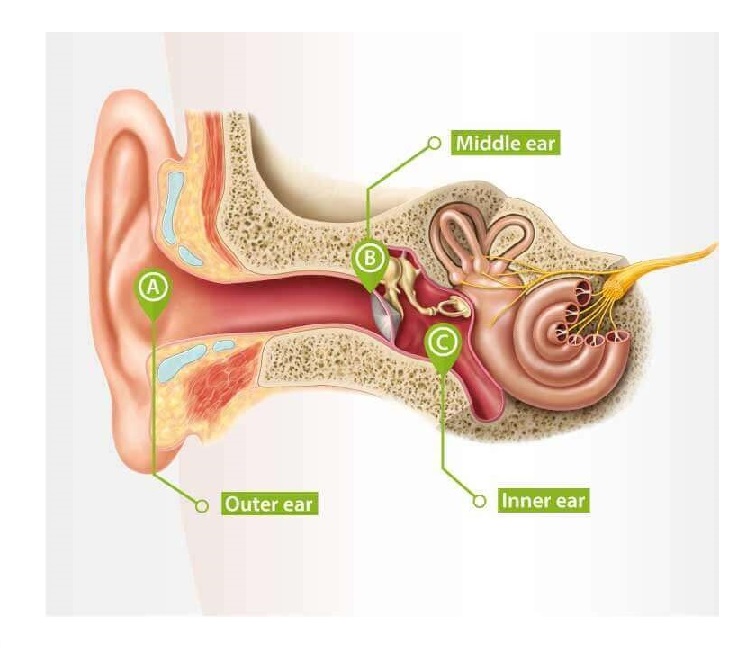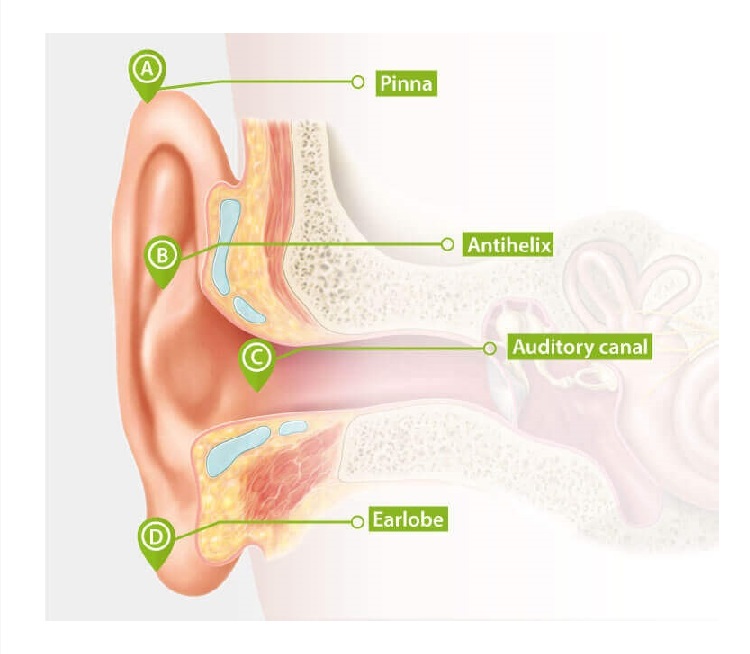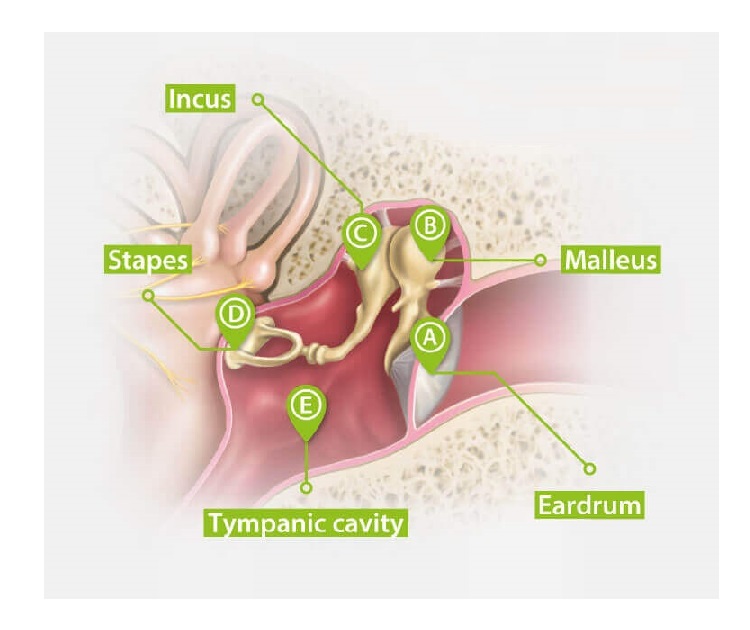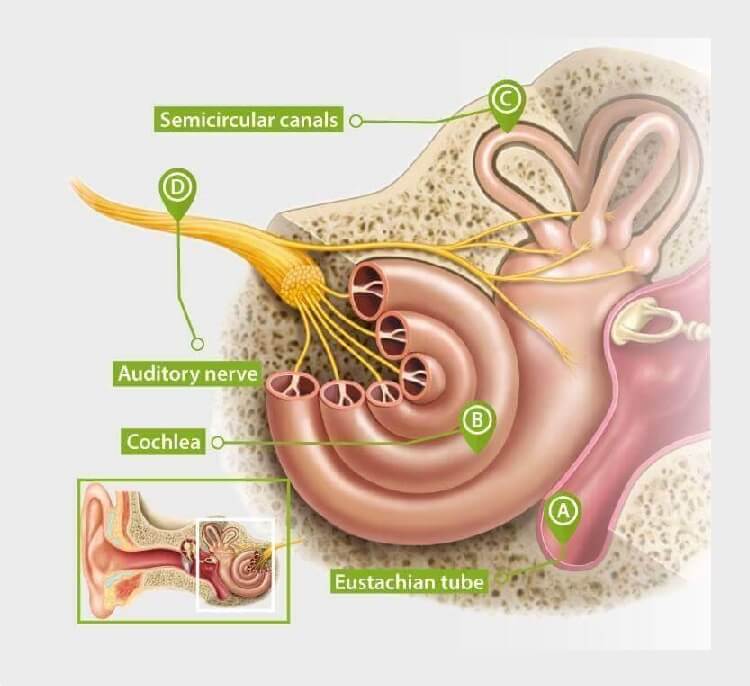The anatomy of the ear
Our ears are incredible, but we often take them for granted. The outer, middle and inner ear all work together to create a hearing system that turns sound waves into signals our brain recognises as speech, music and everyday sounds.

The structure of the human ear
Your hearing system is made up of three main parts: the outer ear, the middle ear and the inner ear. These are all connected by the ear canal, which allows sound to travel through.
What most of us think of as the “ear” is actually just the outer ear. The larger, more complex parts of your hearing system are protected inside your skull.

How does the outer ear work?
The outer ear includes the auricle (the part you can see) and the ear canal. Together, they act like a funnel, guiding sound waves inwards.
The shape of your ear canal naturally amplifies sound and helps reduce the effects of wind and other background noises.

How does the middle ear work?
The middle ear sits just behind the eardrum. When sound waves hit the eardrum, they create tiny vibrations that pass to the three small bones inside: the hammer, anvil and stirrup, the smallest bones in the human body.

How does the inner ear work?
The inner ear begins at the oval window, where the stirrup connects. Here, you’ll find the cochlea — a small, snail shell-like structure filled with fluid and lined with thousands of tiny hair cells.
As sound vibrations travel through the fluid, different hair cells respond to different frequencies:
• Low-pitched sounds stimulate hair cells deeper in the cochlea.
• High-pitched sounds stimulate hair cells near the entrance.
Over time, damage or natural wear to these tiny hair cells is one of the main causes of age-related hearing loss.

How does the ear send signals to the brain?
When sound reaches the inner ear, it’s still just vibrations. The auditory nerve converts these into electrical signals, which travel to the brain.
Your brain then attaches meaning and emotion to what you hear, helping you recognise speech, understand sentences, and identify familiar voices.
Air conduction vs bone conduction
Sounds can reach the inner ear in two ways:
• Air conduction – sound waves travel through the ear canal, eardrum and middle ear.
• Bone conduction – vibrations pass directly through the skull to the cochlea.
Although bone conduction can transmit sound, air conduction is generally more effective.



